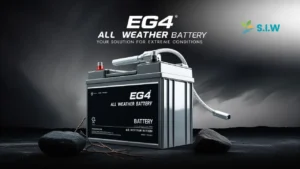Solar energy is one of the fastest-growing sectors in the renewable energy industry, and with this growth comes a surge in demand for qualified solar installers. As more homes, businesses, and government projects turn toward sustainable energy solutions, solar installers play a crucial role in making clean energy accessible. Whether you are looking for a career shift or you’re entering the job market for the first time, becoming a solar installer can offer long-term stability, job satisfaction, and the chance to contribute positively to the environment.
Why Become a Solar Installer?
There are numerous reasons why pursuing a career as a solar installer can be a fulfilling and rewarding path. First and foremost, the demand for solar energy systems has grown exponentially in recent years, leading to an increased need for skilled installers. Governments worldwide are promoting clean energy solutions, with solar power often at the center of these initiatives.
In terms of job satisfaction, solar installers take pride in knowing they are part of a solution to the global energy crisis. The positive environmental impact—helping reduce greenhouse gas emissions—aligns with the values of many seeking purpose-driven work. Additionally, working in renewable energy means positioning yourself in an industry that is not only growing but is also essential for the planet’s future.
Solar installation careers are also lucrative, offering competitive salaries, especially as you gain experience and move up the ranks. Whether employed by a solar company or working as a freelance contractor, solar installers enjoy a blend of hands-on work and problem-solving challenges, making the role dynamic and engaging.
Skills Required to Become a Solar Installer
To become a proficient solar installer, you’ll need to develop a well-rounded set of skills. On the technical side, a strong grasp of electrical systems and engineering principles is crucial. Solar panel installation requires an understanding of how photovoltaic systems generate electricity and how to connect these systems safely and efficiently to a building’s grid.
Problem-solving is another key component of the job. Every installation is different, and solar installers often need to troubleshoot electrical systems or figure out how to place panels for maximum efficiency. This requires critical thinking and the ability to work well under pressure.
Physical fitness is also important for solar installers. The job often involves working on rooftops, climbing ladders, and carrying heavy equipment, so staying fit and maintaining safety awareness are necessary for both performance and protection. Solar installers must adhere strictly to safety protocols, as the work involves heights, electrical systems, and tools that, if not handled correctly, can pose risks.
Educational Requirements for Solar Installers
You don’t need an advanced degree to become a solar installer, but having a solid educational foundation can significantly ease your entry into the field. A high school diploma or GED is typically the minimum requirement, with subjects like mathematics, physics, and technical drawing being particularly useful.
Beyond this, aspiring solar installers should seek out specialized training programs that focus on solar technology. Many vocational schools and community colleges offer courses designed to teach the basics of photovoltaic systems, electrical safety, and how to read blueprints and electrical schematics.
Apprenticeships are another excellent way to gain hands-on experience. Many programs partner with local solar companies to provide practical training, giving you the chance to work alongside experienced professionals while learning the trade.
Certification and Licensing for Solar Installers
While formal education is important, obtaining certification is often a critical step in becoming a trusted and employable solar installer. One of the most recognized certifications in the solar industry is the North American Board of Certified Energy Practitioners (NABCEP) certification. NABCEP certification demonstrates a high level of competence and professionalism, setting you apart in a competitive job market.
In addition to NABCEP, depending on where you live, you may need to obtain a local license to work as a solar installer. This could involve passing exams related to electrical systems or safety regulations, ensuring you can meet local and national standards.
It’s also highly recommended that solar installers obtain OSHA (Occupational Safety and Health Administration) certification. This certification covers the safety protocols necessary to work in construction environments, particularly important when dealing with electrical systems and heights.
Solar Installation Career Path
The journey to becoming a fully-fledged solar installer often starts with entry-level positions, such as working as an apprentice or solar technician. In these roles, you’ll gain valuable on-the-job experience, learning how to install solar panels, connect electrical systems, and assess site conditions.
As you gain experience, you can move up to more senior roles, such as a lead installer or solar foreman, where you’ll oversee installation teams and manage larger projects. For those who want to expand their careers further, opportunities in solar design or project management are available. These positions involve more planning and administrative work, but they also come with higher salaries and increased responsibility.
Tools and Equipment Used by Solar Installers
A solar installer’s toolkit is diverse and requires both basic and advanced tools. Essential tools include wire strippers, cable cutters, and drills—used for connecting electrical systems and securing panels to structures. Safety equipment, such as harnesses and helmets, is mandatory to prevent falls when working on rooftops.
Solar installers also use advanced measuring tools, like multimeters and photovoltaic testers, to ensure the system is operating efficiently and safely. Understanding how to use these tools accurately is essential for both installation and troubleshooting.
Day-to-Day Responsibilities of a Solar Installer
A solar installer’s day-to-day responsibilities are varied and can change depending on the project at hand. Typically, the job begins with a site assessment, where you’ll evaluate the roof or property to determine the best layout for the solar panels. This includes measuring angles, assessing shading, and determining structural integrity.
Once the site is prepared, the actual installation begins, which involves mounting the solar panels, connecting them to the electrical grid, and ensuring all wiring is done according to local building codes and safety regulations. You’ll also need to test the system to ensure it’s generating the expected amount of energy and troubleshoot any issues that arise during the installation. Reliable solar services are crucial for managing these tasks efficiently and ensuring your system performs optimally.
Challenges Faced by Solar Installers
While rewarding, being a solar installer also comes with its fair share of challenges. One of the most common difficulties is working in various weather conditions, as installations often take place outdoors and on rooftops. Whether it’s extreme heat, cold, or rain, solar installers must be prepared to work safely in less-than-ideal conditions.
Electrical and structural issues can also arise, requiring quick thinking and creative problem-solving. Additionally, staying updated on technological advancements in solar energy is crucial, as the industry evolves rapidly. This requires ongoing education and adaptability to new tools and techniques.
FAQs
How long does it take to become a certified solar installer?
Training programs can take several months, and certification, like NABCEP, may require a year or more of experience.
What education do I need to become a solar installer?
At a minimum, you’ll need a high school diploma or GED, but specialized training programs or apprenticeships are highly recommended.
Is solar installation a physically demanding job?
Yes, it involves working on rooftops, lifting heavy equipment, and adhering to safety protocols in various weather conditions.
What is the job outlook for solar installers?
The demand for solar installers is expected to grow significantly over the next decade as more countries push for renewable energy solutions.
What is the average salary of a solar installer?
Salaries vary based on location and experience, but entry-level installers typically earn around $40,000 annually, with experienced professionals earning upwards of $60,000.
Can I work as a freelance solar installer?
Yes, many solar installers choose to work independently. However, it requires building a solid reputation and securing your own clients.
Summary
Choosing to become a solar installer is not just about finding a career—it’s about joining a forward-thinking industry that is actively contributing to a more sustainable future. With growing demand, competitive salaries, and meaningful work, solar installation is a field with plenty of opportunities for growth. By gaining the right skills, certifications, and hands-on experience, you can set yourself on a rewarding path in renewable energy.








